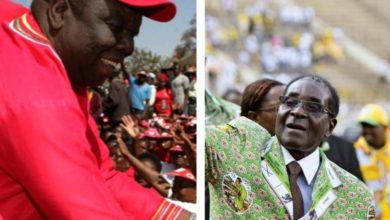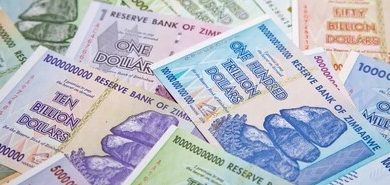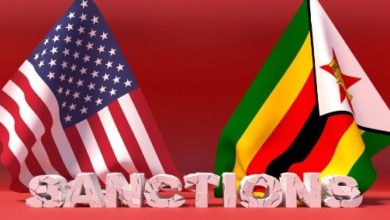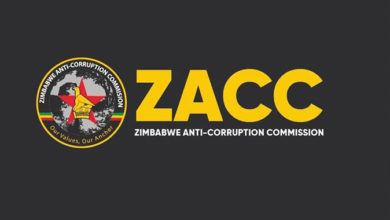The intriguing Book of Zimbabwe – Part 6, Thorns in the economic structure
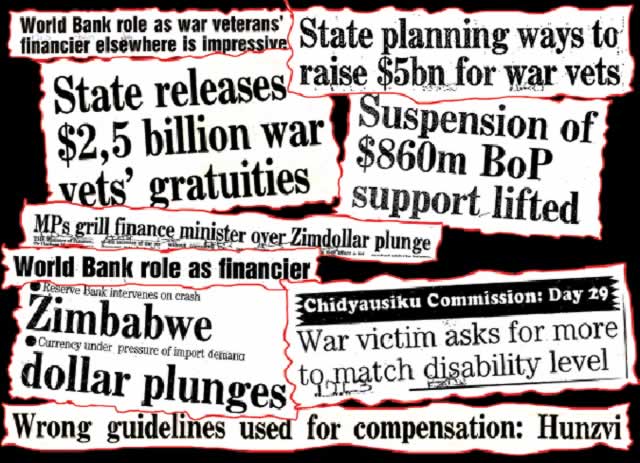
. . . but structural adjustment was not the panacea
Although ZANU PF had come to power with a socialist ideology, it did not follow the nationalisation approaches adopted by some other countries in the African region. Instead, they initially chose to not rock the boat too much and perpetuated capitalist strategies from the Smith era, but also spending significantly on closing social and developmental gaps that existed between the black and white communities.
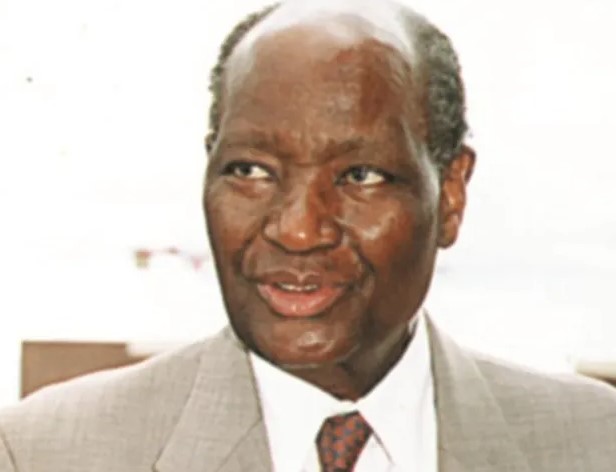
Zimbabwe Finance Minister 1982 – 1995
Towards the end of the 1980s, however, unemployment had started to grow rapidly and many companies were finding it increasingly difficult to restructure in the face of foreign currency shortages occasioned by the country’s protectionist policies. For example, restrictions on repatriation of profits by foreign investors made Zimbabwe an unpreferred destination for new foreign capital. This worsened an already acute foreign exchange shortage, making it difficult for firms to upgrade obsolete capital equipment adding to the limited job creation problem. The government was allocating a lot of funds to subsidies and cheap credit. Although this kept consumer prices from running away, it strained the budget and also allowed inefficient business models to survive because the companies found no compulsion to innovate or restructure. Government spending on civil service and social services drove higher taxation and led to a budget deficit that was financed by public borrowing. It goes without saying that excessive public borrowing crowds out private borrowers and can stoke inflation. Labour laws were overly employee friendly, making it problematic, for example, for companies to undertake restructuring exercises such as retrenchments without approval from the Labour Ministry. Minimum wages were also relatively high and discouraging for business owners. To avoid these rules, employers shunned new fulltime hires, preferring to take-on new staff on short term contracts. In the end, unemployment numbers began to rise.
Economic Structural Adjustment Program
On the back of these environmental challenges, leading private sector associations, international financial institutions and technocrats in government advocated for ESAP (the Economic Structural Adjustment Program) to encourage growth and employment creation as well as to reduce state interference in the economy, thus improving access to foreign exchange whilst reducing the budget deficit. So it was, that the administration in Harare adopted the program to restructure the economy, with one major objective being to reorient the economy towards the production of tradable goods from non-tradable ones. Tradable goods refer to those goods that can be sold in a separate location from where it is produced, and typically this would be another country, thereby earning the producer country foreign exchange. ESAP was adopted in the early 1990s replacing the protectionist policies of the UDI. It was based on the principles of liberalisation, privatisation, exchange rate devaluation and strict fiscal discipline. Yet with all it’s good intentions, ESAP ultimately failed.
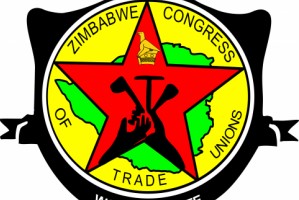
Although improving in the second half of the 1990s, economic growth was poor in its first few years, unemployment continued to rise, many businesses closed, and social services deteriorated. To be fair, the ESAP policies were not solely to blame for the program’s failure. Exogenous forces contributed immensely to the lack of success. When ESAP was introduced, there were disastrous droughts in 1992 and 1995, and a global recession in two successive years reduced raw material prices and export demand. South Africa’s new ANC government cancelled and renegotiated an existing trade agreement with Zimbabwe. For its part, the Zimbabwe government failed to control the national budget deficit leading to a spike in interest rates just as local firms faced increasing competition from foreign firms that were slowly entering the country. Whatever the reason for the failure, whether policy driven or caused by external factors, the government was blamed for the economic troubles. The atmosphere was now ripening for a well organised opposition movement to enter the stage. Rumblings had started inside the various bodies of trade unions amalgamated under the umbrella ZCTU. The relationship between government and the labour force was about to change, change permanently and rapidly so too. The Zimbabwe Congress of Trade Unions (ZCTU) which was beginning to find its voice, openly challenged the government to address the plight of the workers in particular and the rest of the population in general. The ZCTU had been constituted in 1981 as a coalition of smaller trade unions seeking to amplify their voice by forming this larger unified body led by black Zimbabweans. At its inception, the union was aligned with ZANU PF and its nationalistic agenda. Previous trade unions were dominated by white minorities who served to protect their own interests and did little to end industry disputations concerning black workers. The first Secretary General of the ZCTU was Morgan Tsvangirai, a position he held until his resignation in 1999. He had been instrumental in coalescing the workforce behind ZANU PF and its labour friendly policies but economic realities no longer allowed this alliance to sustainably continue. It was early days yet, but the ZCTU was to spawn a movement so powerful that it would shake the political scene in Zimbabwe. We will come back to this shortly, but first, we must understand two other thorny factors that impacted the economy.
A confluence of predicaments of war, war veterans & politicised unions
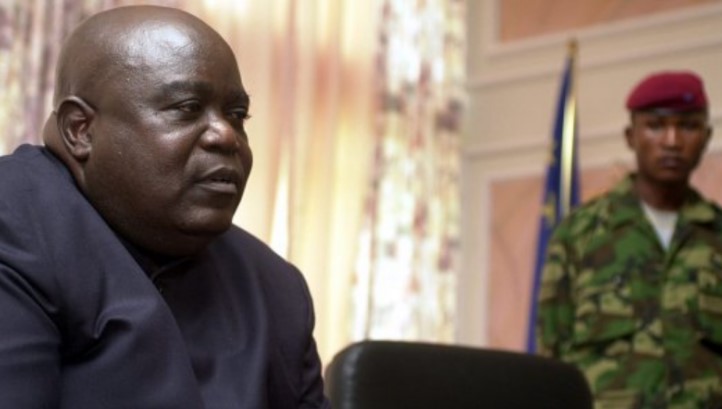
After a series of complex political and military developments involving multiple interests in the Great Lakes Region, General Laurent Kabila and his forces overran Kinshasa, the capital city of the then Zaïre, removing long term leader and dictator, Mobutu Sese Seko. Mobutu fled the country on 16 May 1997, relocating to Morocco where he passed away four months later. The day after Mobutu fled, and with little resistance from Mobutu’s army, Kabila installed himself as President and renamed the country to the Democratic Republic of Congo (DRC). However, by August of 1998, President Kabila was facing a rebellion from ethnic groups within the country and his presidency was under real threat. He reached out to members of the Southern African Development Community (SADC), of which the DRC is a member, for assistance in stopping the insurgency. However, many of the SADC member countries opted to take a neutral stance but Angola, Namibia and Zimbabwe sided with Kabila. By September of that year, President Mugabe had made a decision to intervene militarily in the multisided DRC civil war. From that point on, the house of cards in Zimbabwe began to crumble and here is why.
War is expensive
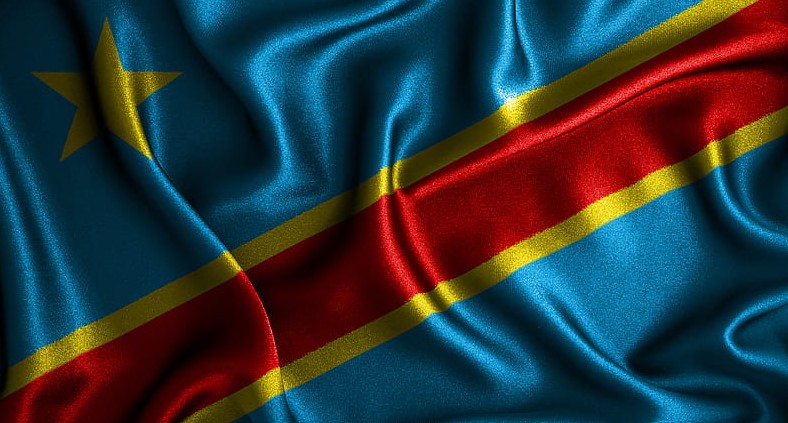
It is reported that when Zimbabwe got involved in the DRC war, it deployed upwards of 10,000 troops to the country over the course of a 14-month period. The war was said to have cost Treasury at least $200 million United States dollars in military equipment, medical and logistical support as well as general sustenance for its fighting men and women. Beyond the financial burden, was the troop losses, as would be expected in any war. However, the exact number of Zimbabwean troops lost during the conflict has never been disclosed. The administration in Harare has kept this a closely guarded secret. Once asked to comment on equipment and personnel losses, the then Defence Minister, Moven Mahachi, declined to answer, saying that disclosure of losses would be made after the deployed soldiers had come home. It was his view that such information would only serve to “enhance those we are fighting.” The war became deeply unpopular with the public in Zimbabwe, especially as it was being fought in defence of a President who himself assumed power through military means. Public debate could have taken a different tone had President Kabila been democratically elected, but he was not, so it made no sense that Zimbabwe would have involved itself at all under the circumstances. To make matters worse, medical staff at public hospitals were striking demanding wage improvements which the government claimed it could not afford, and yet millions of dollars were simultaneously being committed to a foreign war. What is more, is the President had sent the soldiers into battle without the approval of neither Parliament nor the Cabinet. This action overstepped his constitutional authority, which would have allowed him to override Parliament and or Cabinet, where Zimbabwe’s interests were directly and immediately under threat. In this case, events in the DRC presented no such existential threat to Zimbabwe. To quell the disquiet, government trumpeted lucrative sounding deals for diamonds and gold, but analysts were skeptical that any such arrangements would come to fruition, or would benefit the country as touted. Indeed, nothing significant has ever then materialised. Instead, Zimbabwe along with Rwanda and Uganda were later accused by a UN panel of investigators of having systematically exploited DRC resources such as cobalt, gold and coltan. The panel recommended sanctions that were fortunately never then imposed.
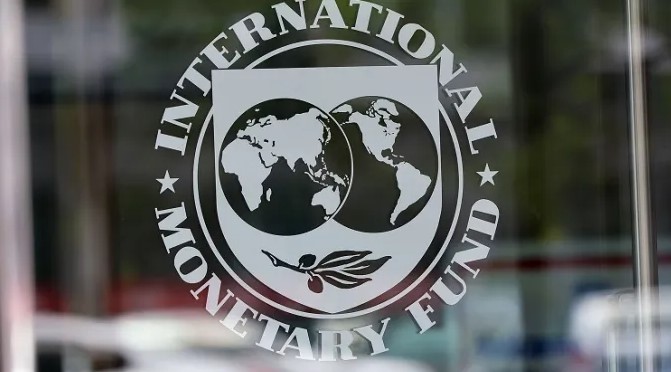
The backstory to Zimbabwe’s involvement in the DRC conflict is important in order to understand its deeper impact on Zimbabwe’s economy. The war created supplementary spending requirements which the government sought to close through borrowings from international lenders. However, Western donors including the International Monetary Fund (IMF) and the World Bank, placed their aid programs to Harare under review citing the unbudgeted military spending in the DRC. The solution the government chose was to start printing more money to fund its operations, including the war in the DRC. The money printing machine went into overdrive, precipitating a currency tumble that started driving inflation in the country. In August of 2007, Professor John Robertson published a paper which showed the official exchange rate against the US dollar decline from averages of 10.5 in 1997 to 18.00 by 1998 and 36.23 by the end of 1999. See Robertson Information Services for Zimbabwean Statistics. As a result of tightening exchange controls implemented to slow the flight of foreign currency from the official banking system, a parallel market for foreign exchange began to thrive and has not gone away since. There, the exchange rate was even higher but the gap with the official rate was not yet as massive as it became in years to come. This was not the only problem the government had to deal with. There were more.
Enter the war veterans
An honest assessment of the government’s performance in its first decade or so in power, would surely give them a fair rating. A lot of things went well, others not so well, whilst Gukurahundi was a hugely painful blemish on the country’s social cohesion, national history and international image. On the developmental front, a 1992 World Bank study reported that since 1980, more than 500 health centres had been built, the percentage of children vaccinated increased from 25% to 67% in 1988, and life expectancy had increased from 55 years to 59 years in the same period, driven by better nutrition and access to health services by the previously marginalized black population. School enrolment increased by 232% the year after primary education was made free for all. Secondary school enrolment increased by 33% in two years. However, all these socially progressive policies naturally increased the debt ratio. Even with all this spending on improving people’s quality of life, the problems of unemployment and creeping inflation meant that urban voter support kept ebbing. Although there had never been a strong opposition in the past, sentiment towards an alternative government was growing, and this was a cause for concern for ZANU PF.
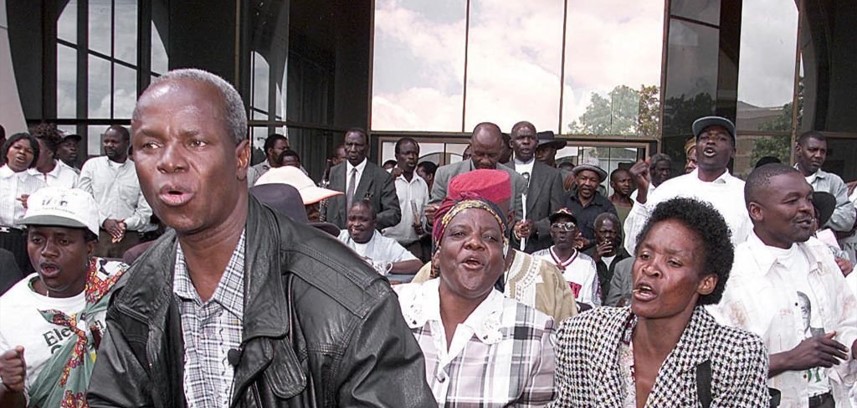
In office from 1997 up to 2001
Image Credit: Creator: ALEXANDER JOE | Credit: AFP via Getty Images
In addition, veterans of the liberation struggle were beginning to question what really was in it for them. Many of them had been left jobless and retired to their villages. Their social and economic reintegration programs discussed earlier, had failed. Basically, they had nothing to show for all the personal sacrifices they had made, and this did not bode well for the ruling party. The government felt they had to take action to appease this group and so, in 1997, they announced a Z$4 billion bonus to be paid to independence war veterans. For context, that was equal to about 3% of the country’s GDP at the time. This came just before the costly and unbudgeted DRC war which erupted in 1998. A drought in 1999 further weakened the economy, and set the young nation up for difficult decades ahead. Under all this pressure, and for the first time, Zimbabwe defaulted on its IMF, World Bank, and African Development Bank (ADB) loans.
With the payment of this bonus, the war veterans had disruptively been assimilated into the political arena, and their loyalty to President Mugabe had been bought for many years to come. From then on, they became a regular feature in ruling party politics. But without adequate financial management training, the bonuses were mostly misused, sometimes in comical ways, and their injection into circulation triggered more inflation and exchange rate instability. Stories were told of war veterans buying fresh cabbages to use as fodder for their cows. Others were said to have bought groceries and hired private metered taxis to drive them hundreds of kilometers to their rural homes because the money seemed endless, and yet an end to the money finally came, and poverty eventually returned. The decision by the government to pay the massive veterans’ bonuses led the IMF to withdraw its support to Harare. Over a short space of time, currency reserves depleted, the Zimbabwe dollar started losing value fast, and the population began mistrusting it as a store of value. The currency had now entered a long and painfully slow death, the black-market exchange rates shot through the roof, and on November 14th, 1997, known as “Black Friday” among Zimbabweans, the official rate plummeted, losing 75% of its value against the greenback. It was a crisis of epic proportions. As can be seen, a lot of factors were building up to create the conditions prevailing in Zimbabwe today. We will unwrap the intriguing multiple deaths and resurrections of the local currency in the coming sections of The Book of Zimbabwe.
Trade Union or Political Party?
The adoption of ESAP is widely seen as the one policy decision that is mostly responsible for causing the economic crisis in Zimbabwe. Quite contrary to its objectives, the program caused a slowdown in growth, prices rocketed, employment contracted, many manufacturing firms closed, social services declined and the living conditions for workers in the urban areas as well as the general rural population deteriorated. Coupled with the effects of the bonuses paid to the war veterans, the negative economic developments caused urban workers in particular, to become agitated. Government had planned to finance the veterans bonus gap from increased taxes, and with the removal of subsidies that came with ESAP, the prices of basics rose. A steep rise in the cost of maize meal, the most widely consumed food staple, prompted the ZCTU to organise widespread protests in January 1998 which paralysed the country for two days. The government responded by reversing the tax increases, and instead, monetized the debt and also implemented price controls, accusing manufacturers and retailers of profiteering.
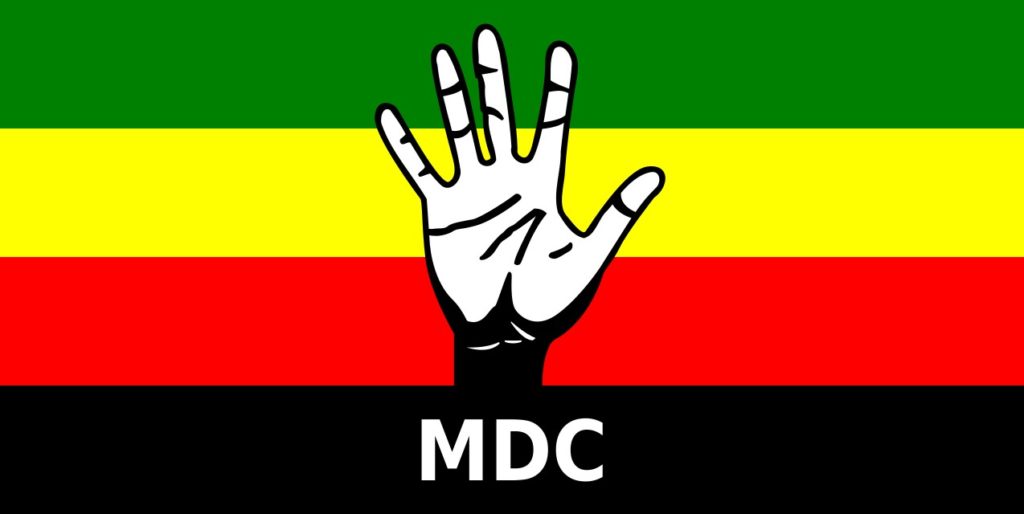
Now, the success of the ZCTU organised protests in getting government to take action on their grievances planted an idea in the minds of many, including the leadership of the union, and by September of 1999, a new opposition political party emerged from the workers union, the Movement for Democratic Change or MDC. Again, its first President was Morgan Tsvangirai who had resigned his post from the ZCTU to take up this new role. The centre-left party, enjoyed massive support from the working class and urbanites in general who had developed many shared grievances about the state of the economy. The new party’s first electoral test came in the year 2000 constitutional referendum where it organised a “Vote No” campaign against a new constitution proposed by the governing party. The proposed constitution provided for a two-term presidential term limit and incorporated certain immunities for past presidents and military commanders. However, the two term presidential limits were not retroactive, implying that Robert Mugabe could still run for two more terms after adoption of the proposed constitution. It also sought to legalise the acquisition of land from white farmers for redistribution to landless blacks. Much to the surprise and chagrin of ZANU PF, the MDC’s “Vote No” campaign won on a low voter turnout of about 20%, forcing the government to abandon its constitutional amendment plan but also putting ZANU PF on high alert for the Presidential elections that were due in 2002.
President Robert Mugabe went on to contest and controversially win three more terms since then. No one could have foretold the dramatic end of his Presidency in that final term, but first, a number of catalytic factors needed to align and some of them were already simmering.
The next political play – land ownership structure
Land redistribution, however, remained a point of contention among the blacks and public tensions, notably in the communal areas, were rising. Not enough had been done to redress land losses suffered under white rule. It was starting to look like the government was reneging on its war and campaign promises. The loss at the referendum was very worrying for ZANU PF. Ever since independence, President Mugabe and his party had always prevailed in all electoral processes with a favourable ratio of votes exceeding 80%. In one election campaign season, a voter was asked during a walkabout news report, whom they were backing for the Presidency. His answer was very telling of the mood among voters, “the obvious choice”, he said. Mugabe was that loved at the time and indeed, he won that election. This loss at the referendum revealed how the tide was turning against them and they were anxious to reverse the trend.
More captivating developments to follow in the next instalment of the Book of Zimbabwe. Share and subscribe and to make sure you do not miss the following chapters.

